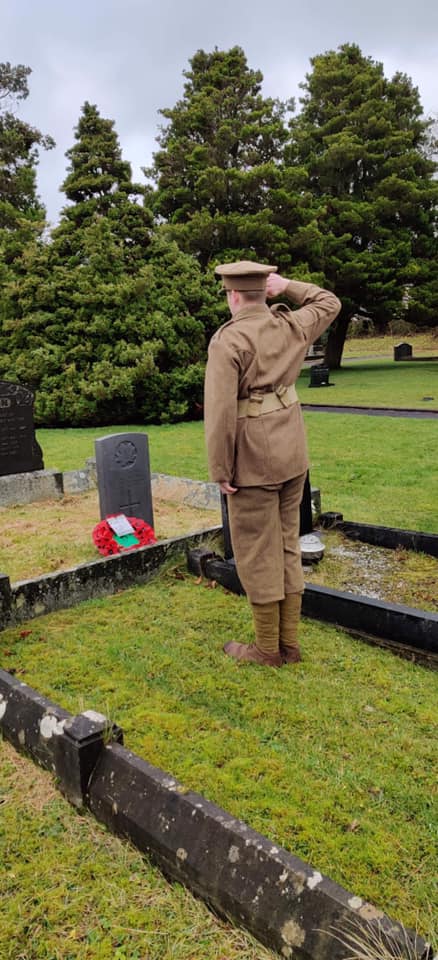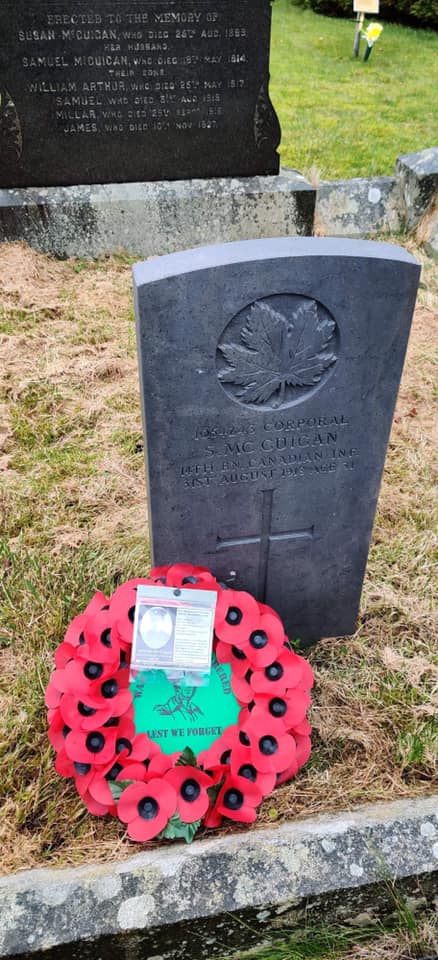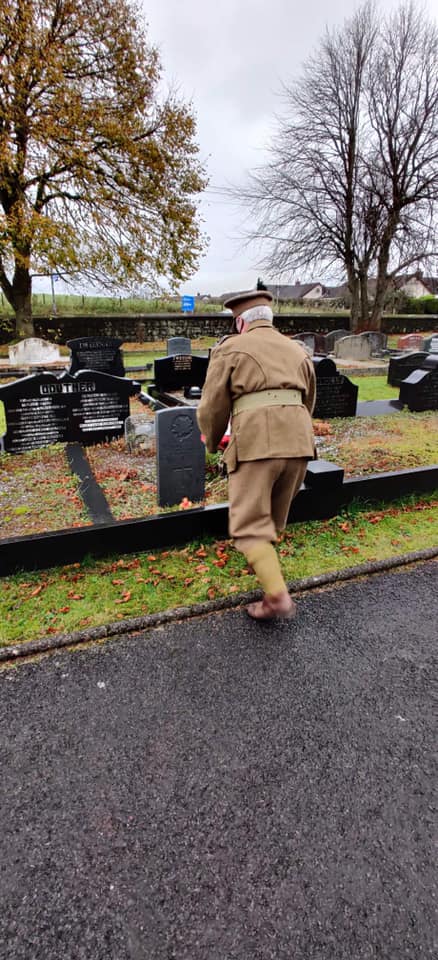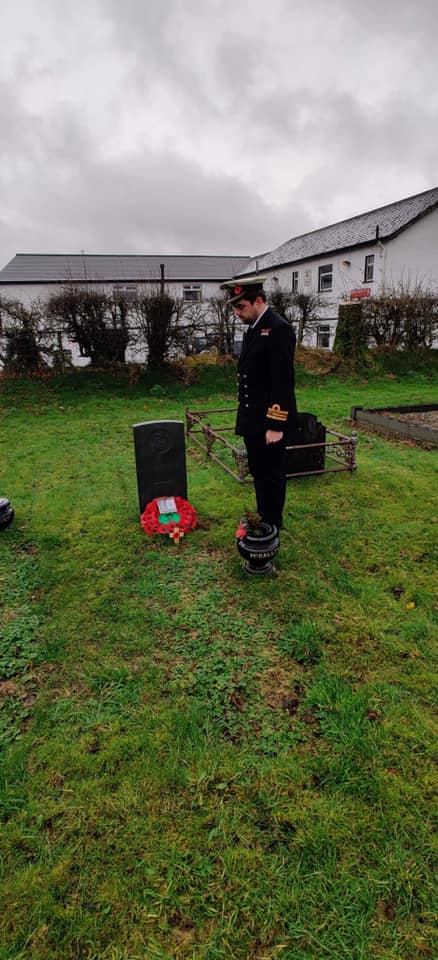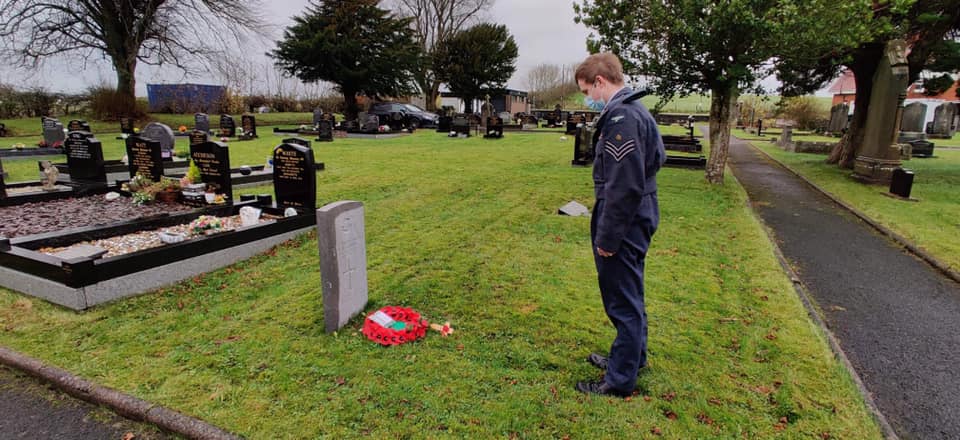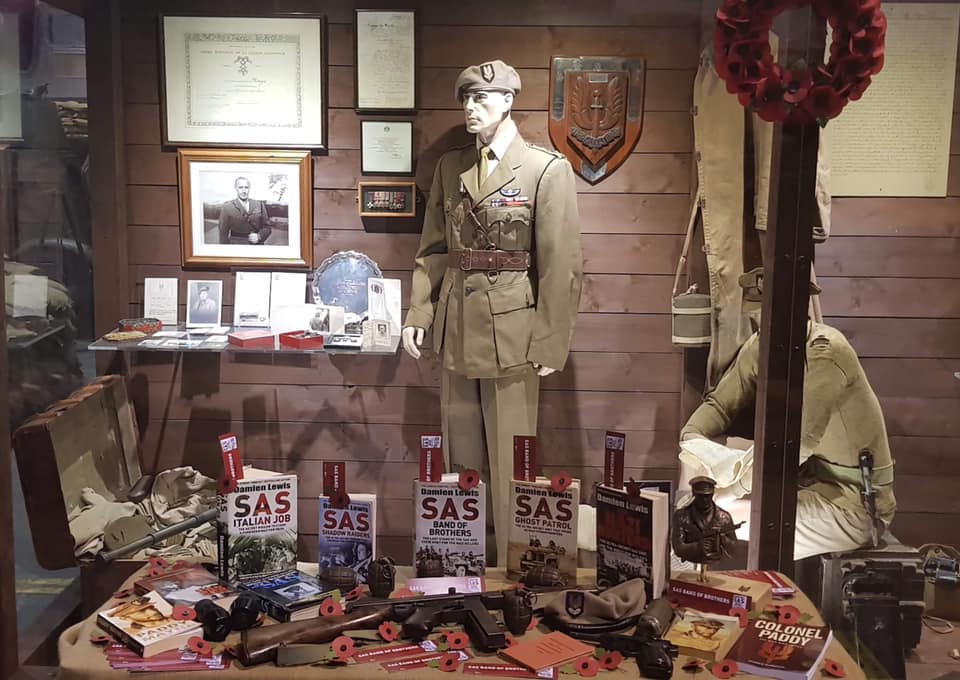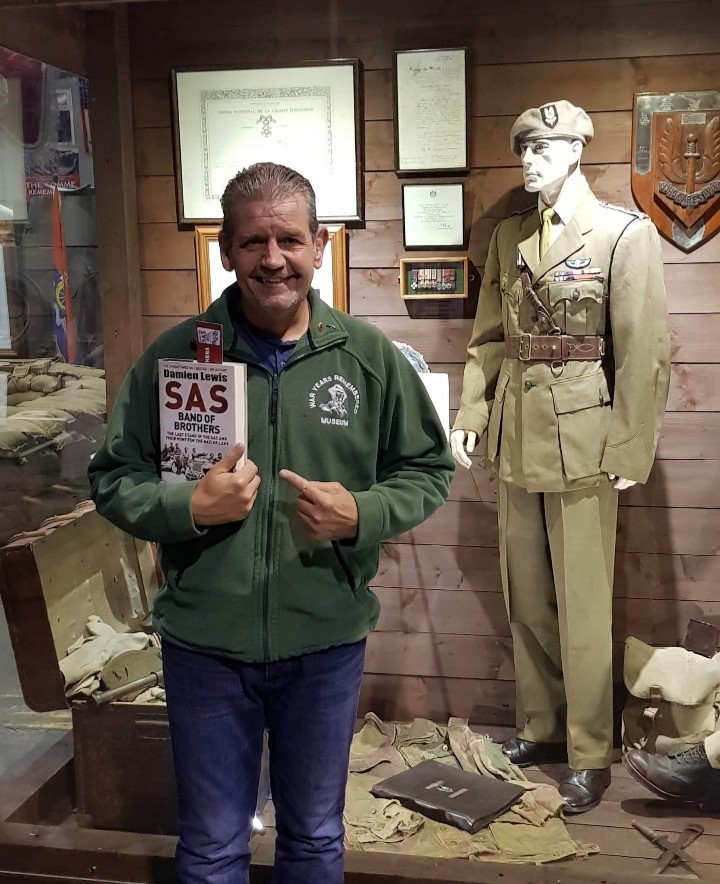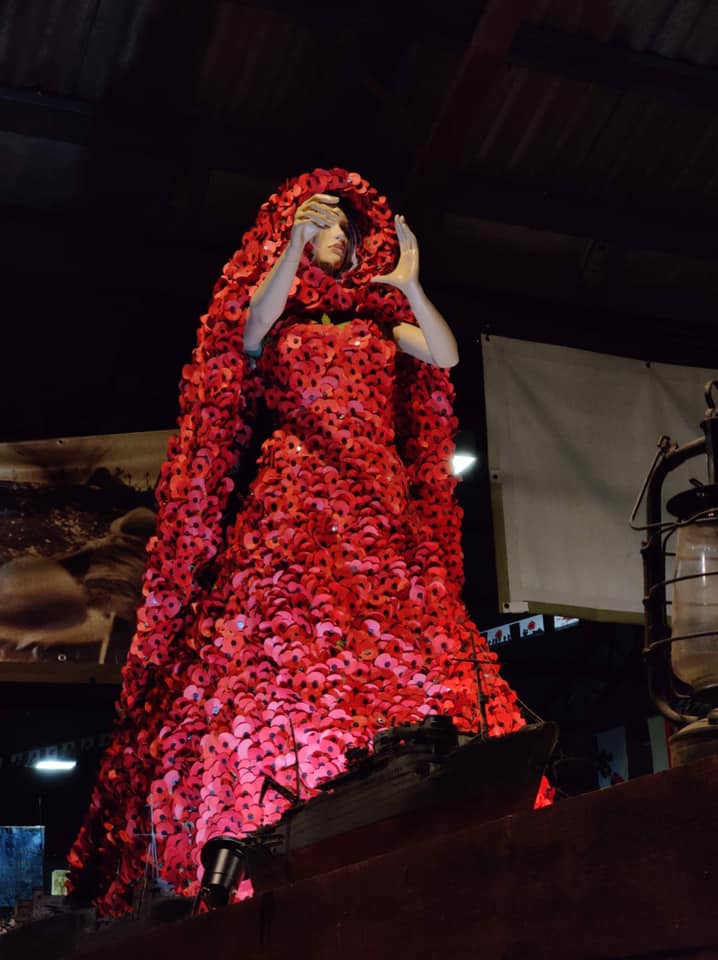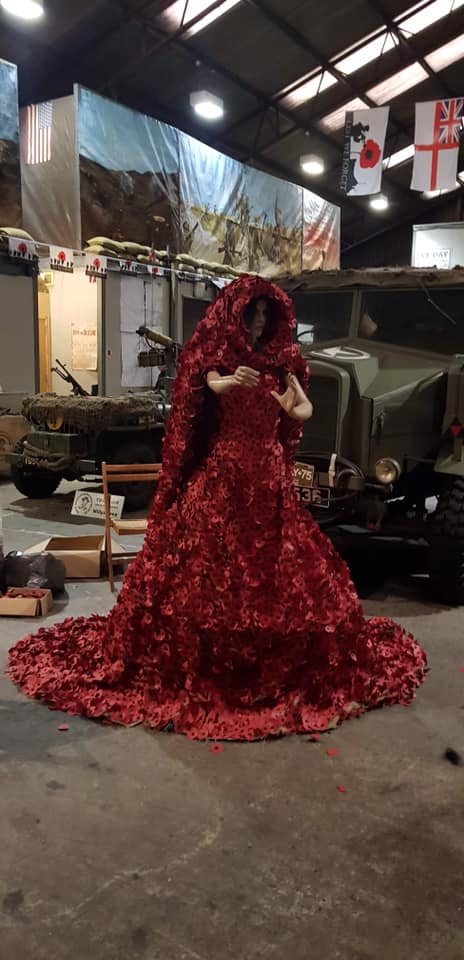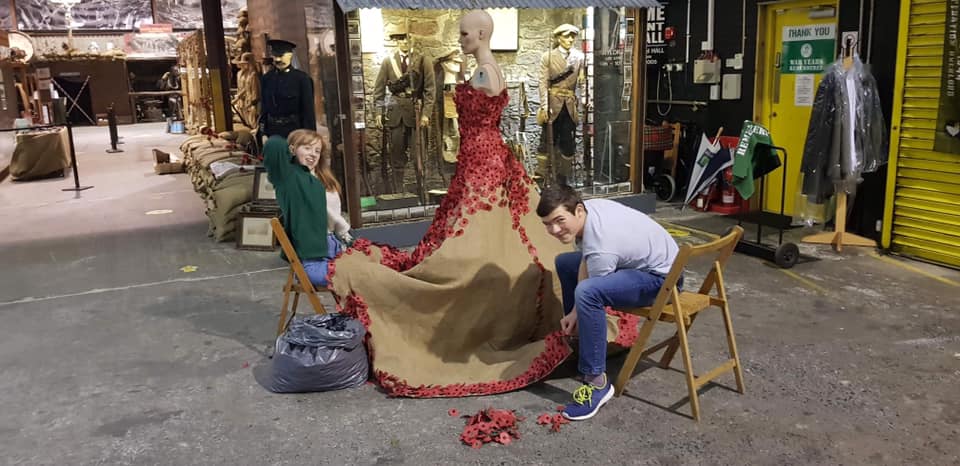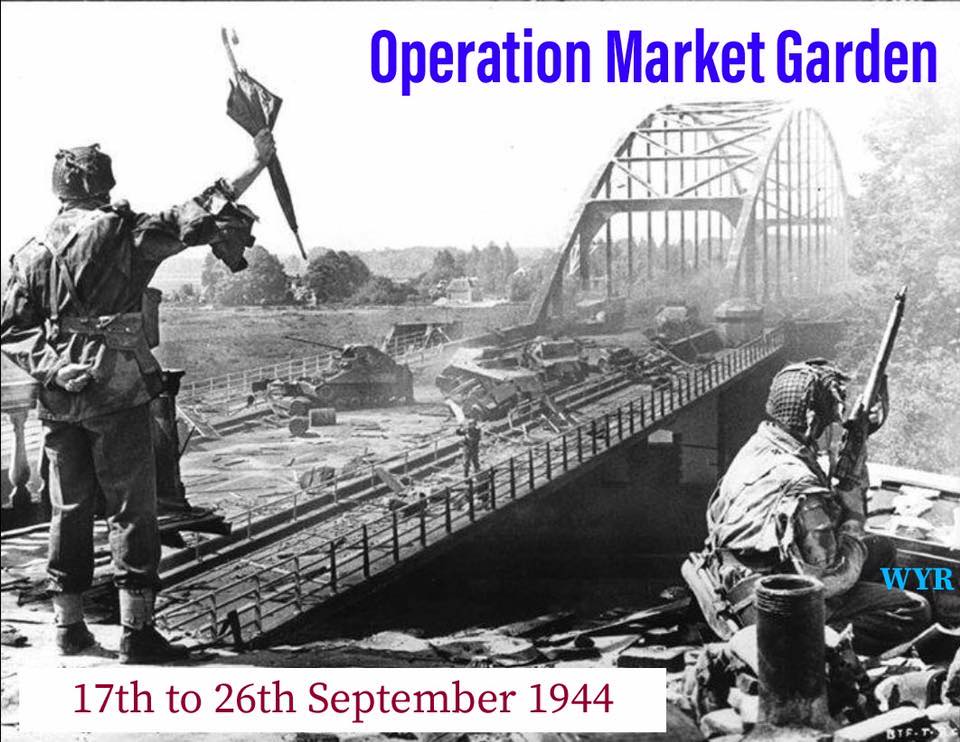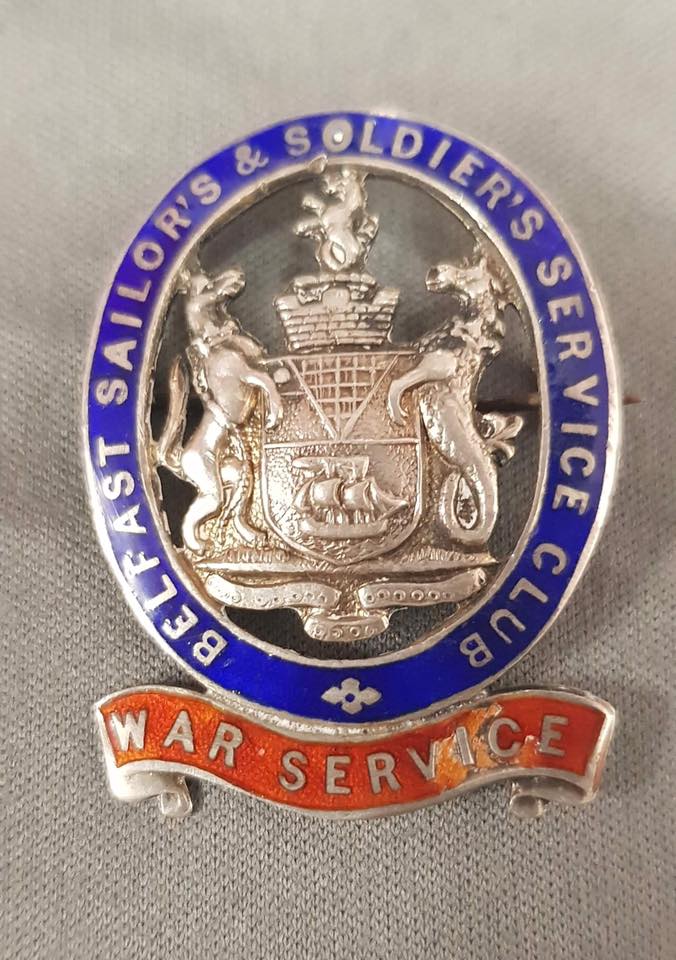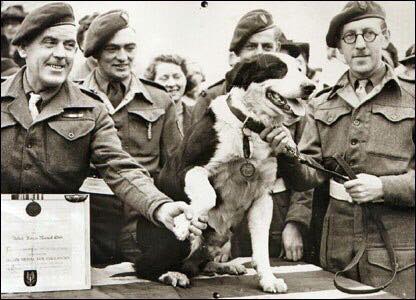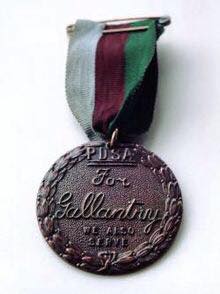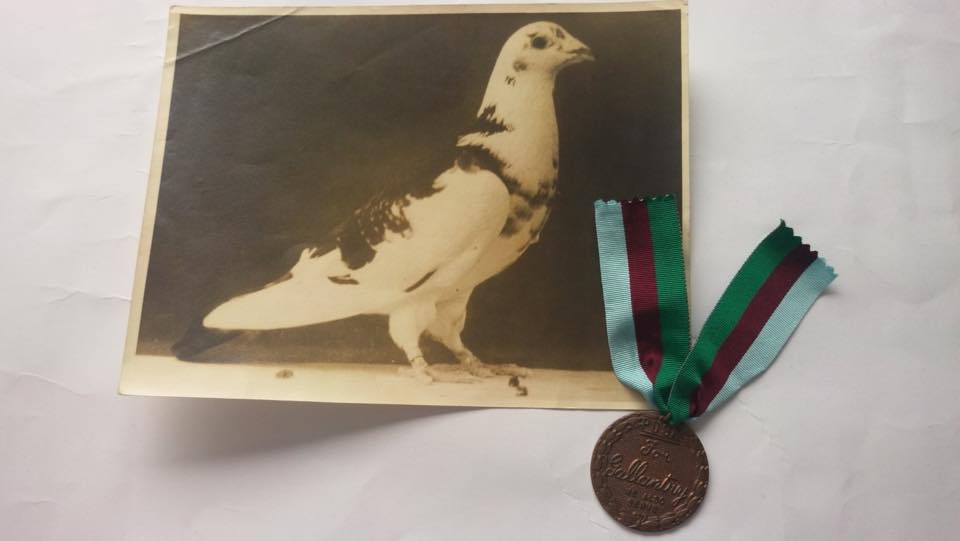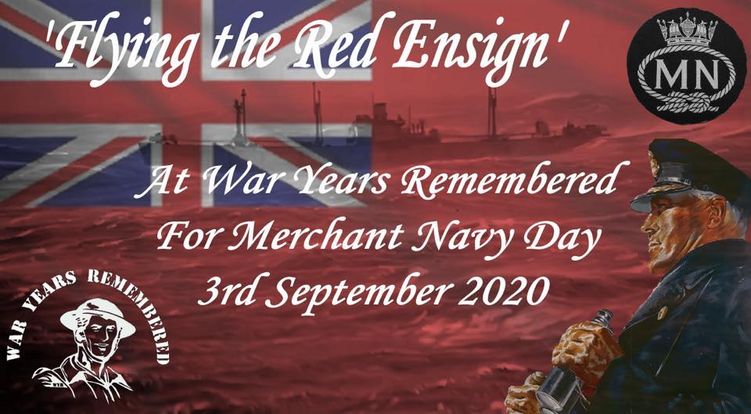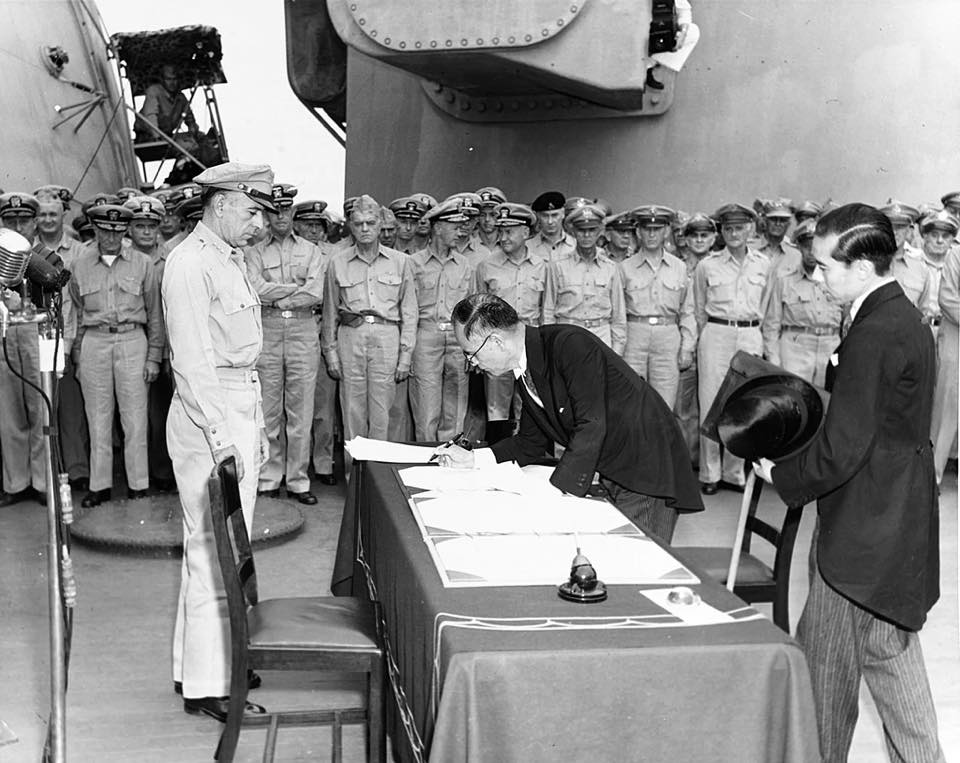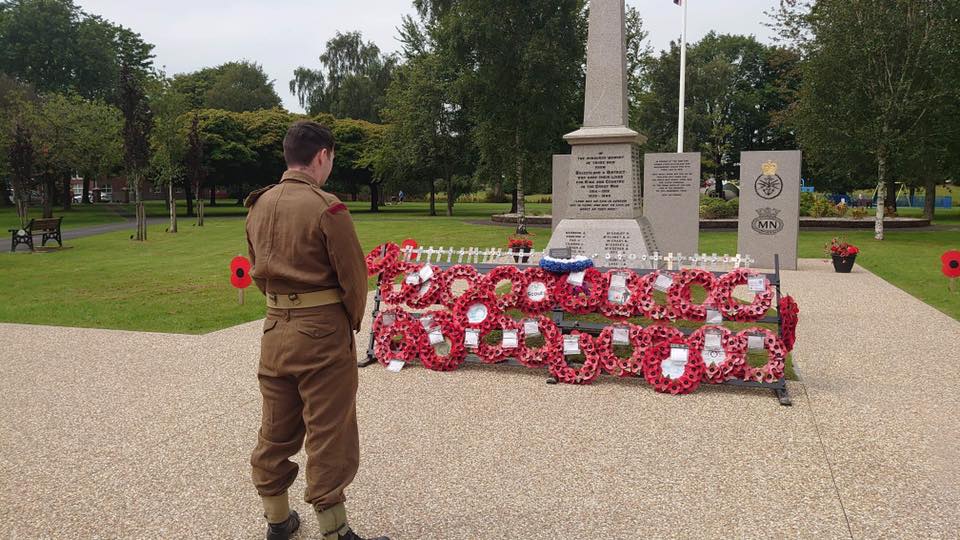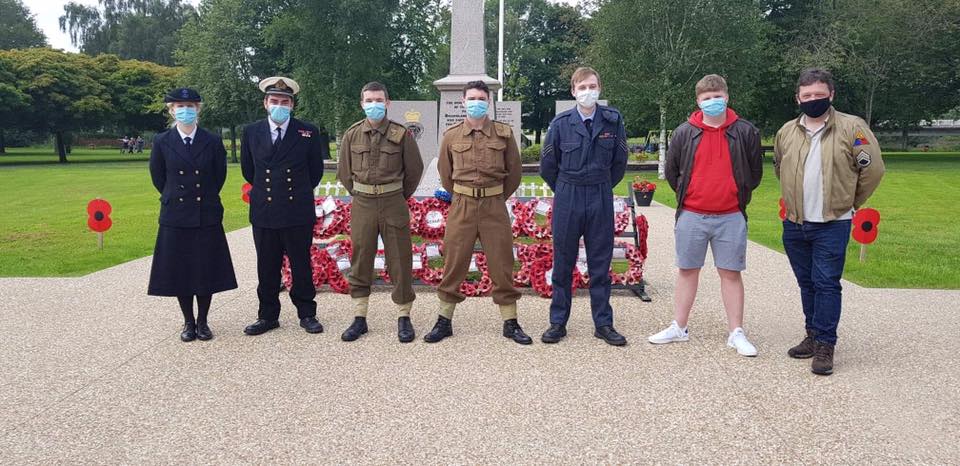Not as we planned it but we marked it as best we could under the current Covid19 restrictions.
Members of War Years Remembered braved the wind and the rain and went on a pilgrimage to visit and to remember 9 local servicemen buried in our country graveyards.
A small act of remembrance was said at each of the graves from the Great and Second World War and at the Main cemetery at 11am we paused, reflected and remembered all those touched by war as we held a 2 minute silence.
I have to say I am very proud of all the volunteers who helped with the research the planning and the execution of this way of marking this Covid19 remembrance.
I would like to personally thank them for all the time and hard work they have given freely with one common goal to remember our veterans.
Ballyclare New Cemetery
First World War
Sergeant Archibald Douther
Born: Ballyclare (28/09/1888)
Lived At: Ballyclare until 1912, then Fergus, Canada
Served With: Canadian Infantry (Eastern Ontario Regiment), 6th (Reserve) Bn.
Service Number: 53042
Date of Death: Died of wounds, 13th December 1918, aged 30
Buried or Commemorated At: Ballyclare New Cemetery, Sec. I. Grave 12
Archibald was the son of Thomas and Agnes Elizabeth Douther and husband of Martha Douther. Archibald worked as a tailor before the War and was also a member of Ballyclare True Blues LOL 957. He died of wounds at home in Ballyclare.
Private Hugh Henry
Born: Larne (1874)
Served With: Royal Irish Rifles, ‘C’ Coy. 13th Bn.
Service Number: 17794
Date of Death: Died of sickness, 22th August 1916, aged 42
Buried or Commemorated At: Ballyclare New Cemetery, Sec. C. Grave 46
Hugh was the husband of Agnes Henry of Ballyclare. Hugh was hit and wounded by a shell splinter.
He was sent to Belfast to recover and was later allowed to return home to Ballyclare to rest, Hugh
had to walk from Belfast to Ballyclare and in doing so opened his wound which later became infected. Hugh died of sickness weeks after.
Corporal Samuel McGuigan
Born: Ballyclare (27/02/1889)
Lived At: Three Rivers, Canada
Served With: Canadian Infantry (Quebec Regiment), 14th Bn.
Service Number: 1054243
Date of Death: Died of wounds 31st August 1918, aged 30
Buried or Commemorated At: Ballyclare New Cemetery, Sec. C. 31
Samuel was the son of Samuel and Susan McGuigan. He was a member of his local militia, the
86th Regiment, Three Rivers Militia. Samuel worked as a boss finisher before the war and was also a member of Ballyclare True Blues LOL 957.
Rifleman Thomas McNeilly
Born: Braetown, Glenwherry
Lived At: Park Street, Ballyclare
Served With: Royal Irish Rifles, ‘C’ Coy. 18th Bn.
Service Number: 380
Date of Death: 24th January 1919, aged 23
Buried or Commemorated At: Ballyclare New Cemetery, Sec. B. Grave 70
Thomas was the son of William and Elizabeth McNeilly. Thomas was wounded in action at Armentieres and died later at a hospital in Dublin.
Second World War
Aircraftman 1st Class Nathaniel McGrady
Born: Park Street, Ballyclare (1920)
Served With: Royal Air Force, 949 Balloon
Service Number: 630150
Date of Death: Killed in accident, 20th June 1940, aged 20
Buried or Commemorated At: Ballyclare New Cemetery, Sec. H. Grave 21
Nathaniel was the son of William McGrady of Ballyclare. He died in an accident in Crewe, England. He was larking with Aircraftman Herbert Gaskell who was on sentry, when Gaskell's rifle went off by mistake and shot McGrady in the stomach. He told an RAF officer that 'it was a pure
accident.' McGrady died ten days later from the injury.
Ballylinney Old Graveyard
First World War
Second Lieutenant James Milliken (Milligan)
Lived At: Main Street, Ballyclare
Served With: Royal Engineers, Royal Irish Rifles, 12th Bn., and Royal Air Force
Service Number: 174776
Date of Death: Died in accident, 31st December 1918, aged 26
Buried or Commemorated At: Ballylinney Old Graveyard, Grave 280
James was the son of Samuel and Hessie Milliken. After serving with the Royal Irish Rifles James transferred to the Royal Flying Corps and was learning to fly around the Toon area of Scotland when his plane crashed.
Second World War
Sergeant Robert Laird
Born: Belfast (11/05/1900)
Served With: Royal Army Service Corps
Service Number: T/20729
Date of Death: 23rd November 1944, aged 44
Buried or Commemorated At: Ballylinney Old Graveyard, Grave 278
Son of James and Elizabeth Laird, husband of Hannah Louisa Laird.
Rashee New Cemetery
Second World War
Sergeant Robert Charles Beggs
Born: Ballyclare (04/03/1915)
Served With: Royal New Zealand Air Force (Air bomber)
Service Number: 427441
Date of Death: 12th June 1944, aged 29
Buried or Commemorated At: Rashee New Cemetery, Sec. D. Grave 24
Robert was the son of Robert James Beggs and Elizabeth Beggs and husband of Susan Beggs, of Templepatrick. He emigrated to Auckland, New Zealand and worked as a factory hand before the war.
Able Seaman Henry McCauley
Born: Ballyclare (1930)
Lived At: Mill Lane, Ballyclare
Served With: Royal Navy, H.M.S Courageous
Service Number: D/J 35109
Date of Death: 17th September 1939, aged 39
Buried or Commemorated At: Rashee New Cemetery, Sect. A. Grave 39
Henry was the son of Robert and Mary McCauley. Henry served out his pension with the Navy in January 1939 and was in the naval reserves when the Second World War broke out. His ship was torpedoed off the Irish coast by a German U-boat. Henry was the first man from Ballyclare to die in the Second World War.
Also Commemorated
Great War
David McCallion Royal Irish Fusiliers
Frederick Carlisle North Irish Horse
David Carlisle Royal Irish Rifles later RSM Royal Ulster Rifles
Second World War
Lewis McConnell Royal Navy
Torrens Wilson Boyd Royal Navy
Robert Andrew Loughlin 1st Royal Ulster Rifles
William White 1st Royal Ulster Rifles
Noel Johnston Royal Corps of Signals
Post War Service
William Carlisle Ulster Defence Regiment
Robin Thompson Royal Irish Rangers TAVR
Thank you all for your very kind help and support to help us keep their memories alive.
Together We Will Remember Them.
